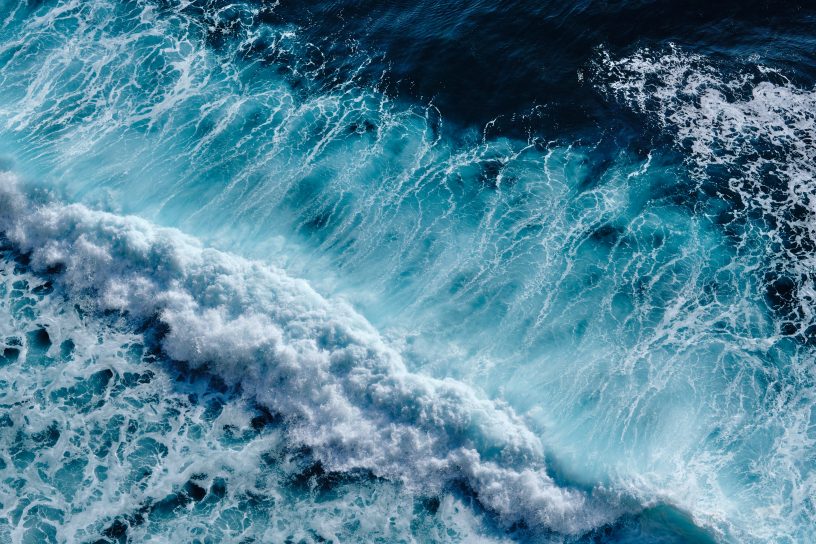
Diving Arctic Waters
This past August, four Ocean Wise divers motored to a remote Arctic islet to conduct a BioBlitz survey. A BioBlitz is a snapshot of Canada’s biodiversity, recorded by scientists and citizen scientists, to mark the country’s 150th anniversary. As one of 35 Bioblitz events coordinated by the Canadian Wildlife Federation, and made possible in part by the Government of Canada, the Ocean Wise divers came to Nunavut to document the remote reaches of Canada’s coastline. Their dive that morning, an hour away from the hamlet of Cambridge Bay, Nunavut, would be one of the most northerly BioBlitz events taking place in Canada. (You beat us by 0.3 degrees, Tuktoyaktuk, Northwest Territories!)

Before jumping into frigid two-degree water, our Inuk guide and boat driver, John Lyall Jr., had to find the correct depth with a wireless depth sounder. Deeper water means colder temperatures that decrease the time a diver can spend exploring the seafloor. A depth of approximately 15 metres is the sweet spot: deep enough to document the seafloor’s biodiversity and warm enough to allow for a 40- to 50-minute dive.
Meanwhile, Jeremy Heywood, Ocean Wise’s Diving and Boating Safety Officer, and his diving buddy, Jessica Schultz, Manager of Howe Sound Research, were suiting up for the first dive of the day. They took flashlights with them to peek into dark crevasses, along with plastic writing slates and underwater pencils to record what they saw. After their fins disappeared beneath the surface, Team Two prepared for their plunge.

While we waited for Team One to return to the surface, John Lyall Jr. motored the boat around the dive spot. Every few seconds, a burble of bubbles streamed up from below. Lyall couldn’t anchor his boat because, if something went wrong, we would have to respond quickly. There would be no time to haul anchor. Instead, he drove the boat upstream of the current, cut the engine, and let the boat drift back to Team One’s bubbles. Then he repeated this process again, and again, and again, until the divers resurfaced.
A seagull did not like that we were hanging around the islet. As we waited for Team One to return, the gull cawed and swooped aggressively at us.
“What is that bird’s problem?” I asked Lyall after the third dive bomb. It’s a mother gull, he explained, and she’s anxious about us coming too close to her babies.

“Where are the babies?” I asked Lyall. There were no signs of life on the rubble island, only swirling dust and pink boulders left from the last ice age.He pointed to a section of choppy water more than a hundred metres away from the boat. I could barely make out five fuzzy specks bobbing up and down. It’s safer for them on water than land, he said.
This was classic John Lyall Jr. When Lyall was out on the land, he had a hunter’s awareness about the weather, the animals, the currents. It put jay-walking city-slickers like me to shame. And Lyall’s observation highlighted just how much biodiversity there is to see in the Arctic, but you have to know where to look.
Peering over the side of the boat, I saw Lion’s Mane jellyfish drifting past and tiny parasitic amphipods hitching a ride on their folds. There were flocks of eider ducks streaming by the boat. And, of course, there was that seagull: “Caw. Caw. Caw.”

After 50 minutes, Jeremy Heywood and Jessica Schultz resurfaced, their writing slates scrawled with the names of flora and fauna they saw down below. The ocean floor looked barren, they reported, covered in sand and cobble, but they were surprised by the diversity of animals they found. “We saw several different species of burrowing anemones, some small shrimp and mysids and fish,” Jeremy Heywood said.
“It’s a worthwhile endeavor,” Jessica Schultz added about the BioBlitz survey, “and wonderful to be under there looking for new organisms and trying to capture how unique the environment is here.”
Laura Trethewey is the Senior Writer and Editor for Ocean Wise’s storytelling site: ocean.org.
Posted November 2, 2017 by Ocean Wise







